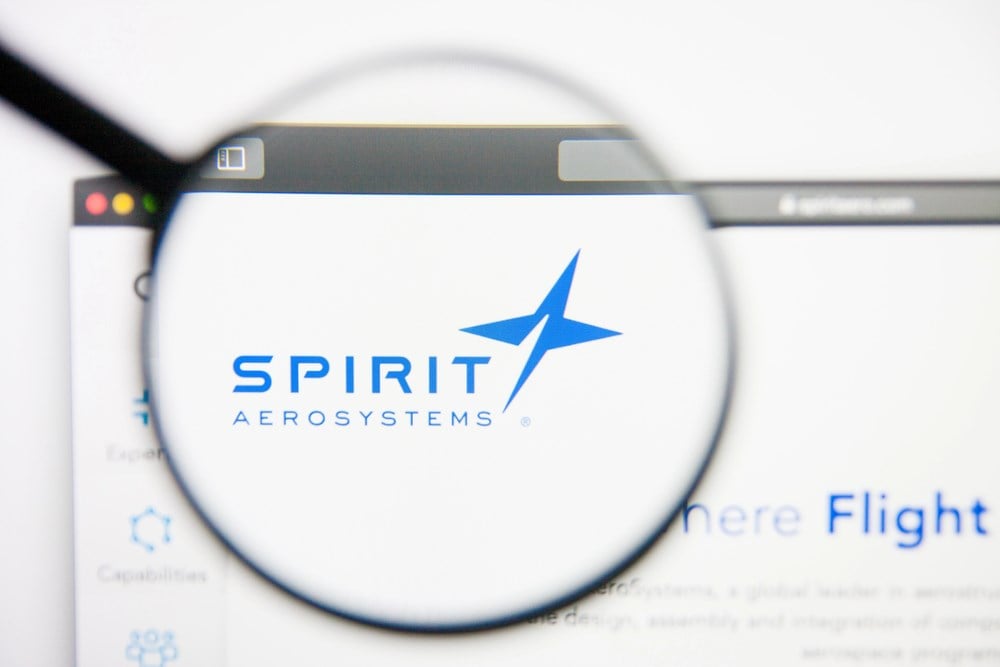
One aircraft company that hasn’t benefited from the travel recovery is Spirit AeroSystems Holdings, Inc. (NYSE:SPR). The Kansas-based plane parts manufacturer has been grounded by the Russia-Ukraine conflict, fewer orders, labor costs and lingering supply chain issues. A wider net loss is expected in 2023 and the stock is on pace for a second straight annual decline.
Thankfully for shareholders, the worst may soon be over.
Spirit AeroSystems shares shifted into high gear last week after the company announced an agreement with key customer Boeing. The collaboration is designed to improve the quality and delivery volume of Spirit AeroSystems products following a prolonged period of supply chain inefficiency and recent quality problems with Boeing 737 fuselages. It demonstrates a willingness on Boeing’s part to not only work with its struggling supplier but to also ramp orders.
Better yet, the deal provides Spirit AeroSystems with a much needed cash infusion. The company will receive an immediate $100 million payment courtesy of Boeing for the tooling required for 737 and 787 production increases. Spirit is forecast to earn $455 million in incremental revenue through 2025 (albeit at the expense of a $265 million revenue decrease from 2026 to 2033).
In addition to the improved financial stability, Spirit could get one other benefit. Boeing rival Airbus, which is also a Spirit customer, may eventually adopt a similar agreement with the supplier to keep pace with its competitor.
The news helped Spirit climb 23% to $21.16 on October 18th, accelerating the mid-cap’s slow rebound from a three-year low. Trading on the former $100 stock was a record 31.7 million shares, more than seven-times normal. The rare green volume spike could signal smoother air ahead.
What Is the Growth Outlook for Spirit Aerosystems?
One thing that Spirit had going for it prior to the Boeing boost is diversified top line growth. The core commercial business as well as the defense and aftermarket segments all posted revenue growth in Q2. The problem is that only the two smaller segments are operating in the black. Top line commercial growth has been repeatedly wiped out by a union work stoppage, excess capacity costs and revenue adjustments for a potential customer claim.
With the impact from Russia sanctions largely in the rear view mirror, Spirit’s return to profitability hinges on improving its operations and relationships with Boeing and Airbus. If it can maintain revenue growth while lowering costs, better quarterly reports should follow. The reduction of a $3.9 billion debt balance and the associated interest expense will also be a key development to watch.
The turnaround effort will likely be piloted by a new leadership team. Earlier this month, Spirit introduced board member Patrick Shanahan as Interim President & CEO, who took over for the embattled Thomas Gentile. A search is underway for a permanent CEO, so leadership uncertainty adds to the stock’s risk level.
Mr. Shanahan will lead his first earnings call on November 1st when the company releases its third quarter financial results. Analysts are forecasting a 17% year-over-year jump in revenue and a $1.35 per share net loss, both of which would be sequent improvements from Q2.
Looking ahead to next year, the consensus EPS estimate turns from red to green. Considering some analysts are probably still digesting the Boeing news, the current $0.60 per share profit forecast could trend higher in the coming days.
How Did Wall Street Respond to the Spirit-Boeing News?
Spirit’s agreement with Boeing has so far received mixed reviews. Last week, TD Cowen suggested that the short-term financial gains are offset by the 2026 cash flow reversal and long-term execution risks in sticking with a neutral rating. Truist expressed near-term caution but offered a favorable longer-term view of the industry’s demand, pricing and equipment shortage dynamics.
Deutsche Bank, on the other hand, considers the Boeing development to be a clear positive. The firm upgraded Spirit from a hold to a buy and gave it a $30.00 price target. J.P. Morgan stuck with its bullish stance, citing the company’s CEO transition and future growth prospects in addition to the Boeing news.
By Boeing taking a more hands-on approach to resolving its supplier issues, Spirit may now have the de facto second set of eyes it needed all along. A successful collaboration could provide a lift for both companies (and their depressed stocks) and help restore credibility to the aircraft manufacturing industry.













